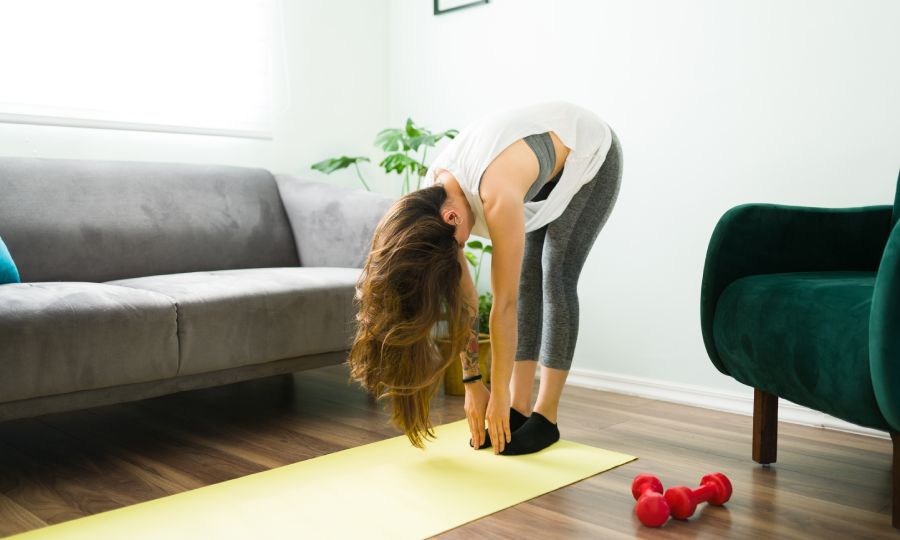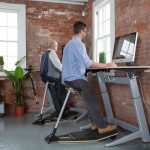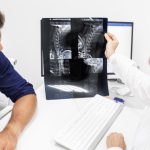If you have mild to moderate low back pain or sciatica, you can see a doctor of physical therapy, who will be able to assess your condition and prescribe exercises to help improve your mobility and decrease your pain.
Lower back pain affects nearly everyone at one time or another. Studies indicate that postural awareness and exercise are two of the most important things you can do to manage lower back pain. By keeping proper posture and good mobility and strength in your lower back, you can also help prevent lower back pain from occurring in the first place or returning after it has resolved.1
Gordon R, Bloxham S. A Systematic Review of the Effects of Exercise and Physical Activity on Non-Specific Chronic Low Back Pain. Healthcare (Basel). 2016;4(2):22. Published 2016 Apr 25. doi:10.3390/healthcare4020022
:max_bytes(150000):strip_icc():format(webp)/492690681-56a72ac75f9b58b7d0e7817c.jpg)
If you have lower back pain that’s severe, limits your movement, or lasts more than a few weeks, you need to visit a healthcare provider or physical therapist.2
Easy Exercises
Here are a few simple exercises to try, but check in with your healthcare provider before you start to be sure that each type of exercise is safe for your specific condition. These exercises should be performed three to four times per day. Be sure to monitor your symptoms while exercising, and stop if you feel any increase in pain:
-
- Prone lying: Simply lie down on your stomach and rest. Stay in this position for 1-2 minutes and breathe slowly and deeply. After a few minutes in this position, move on to the next exercise.3
- Prone prop-ups: While on your stomach, prop yourself up onto your elbows. Stay in this position for 1-2 minutes and breathe slowly and deeply in this position. Once this position becomes comfortable, move on to the next exercise.
- Press-ups: While lying on your stomach, put your hands flat on the floor under your shoulders, like you are going to start a push-up. Press your shoulders up and let your hips and low back relax. Your hips should remain in contact with the floor as you press up. Hold the end position for 1-2 seconds and return fully to the starting position. Perform 10 repetitions. Bonus exercise: the Prone Press Up with Hips Off Center.
- Pelvic tilt: While lying on your back, roll your pelvis backward and press your low back flat into the floor. You should feel your abdominal and buttock muscles tighten as you perform this. Hold the position for 1-2 seconds, and slowly relax back to the starting position. Perform 10 repetitions.4
- Supine lumbar flexion: Some conditions, like lumbar spinal stenosis, typically require lumbar flexion (forward bending) to get better. A safe way to progress lumbar flexion is by starting supine, bringing your knees to your chest, and holding. The second progression is seated lumbar flexion, sitting in a chair and slowly bending forward to reach toward the floor. The third progression is lumbar flexion in standing, bending forward while standing, reaching toward the floor.3
If lumbar flexion makes your symptoms worse, discontinue doing this activity. This activity could worsen those with herniated disc issues. It is best to see a PT who can assess if flexion- or extension-biased exercises are best for you.
If you have leg pain coming from your back, watch for the centralization phenomenon. This means that pain in an arm, leg, or buttock suddenly shifts to a spot closer to the spine with spine movement. It is a good sign that you are doing the right exercise for your condition.
When your pain has subsided, perform the exercises once per day to help maintain a healthy spine and to help prevent future low back pain.5
Posture
The most common cause of low back pain is poor sitting posture. It is very important to maintain proper sitting posture if you have low back pain. Use a small pillow or towel roll in the small of your back to help support your spine while sitting. Maintaining proper posture is also a great way to prevent low back pain in the future.
Postural awareness can also be improved by performing the slouch-overcorrect exercise or by using innovative technology like the TruPosture Smart Shirt. By learning to attain and maintain proper posture, you can limit stressors to your back and potentially prevent back pain.6
LUMBAR SPINE: SET №2 GENERAL REHABILITATION AND SUPPORT. MID STAGE
Conclusion
If you are feeling low back pain, a self-care plan to manage the pain and restore mobility is essential. By keeping your spine mobile and strong and by maintaining good posture, you may be able to quickly return to your normal activities and lifestyle.6







